Urban gardening has become increasingly popular as more people seek to grow fresh, healthy food in limited spaces. Even if you live in an apartment, have a small balcony, or only a tiny patch of outdoor area, container gardening allows you to cultivate your own vegetables efficiently. Container gardening not only maximizes space but also offers the flexibility to move plants around to optimize sunlight, water, and protection from pests. In this article, we explore five vegetables that thrive in small containers, along with practical tips to ensure a bountiful harvest, even in the most compact urban settings.
1. Lettuce – The Quick-Growing Leafy Green
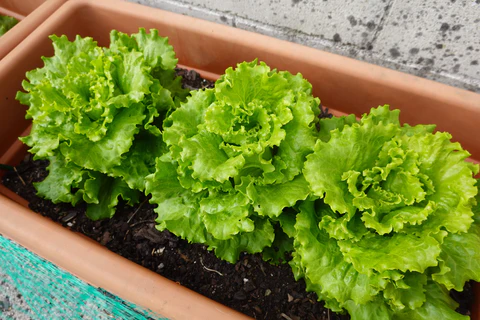
Lettuce is one of the easiest vegetables to grow in small containers and is perfect for urban gardeners. Its shallow root system means it doesn’t require deep pots, making it ideal for balconies, windowsills, or small patios.
Why Lettuce Works Well in Containers
- Fast Growth: Lettuce matures in as little as 30–45 days, allowing multiple harvests per season.
- Variety: Leaf lettuce, butterhead, and romaine all grow well in containers.
- Compact Roots: A pot 6–8 inches deep is sufficient.
Planting Tips
- Soil: Use a lightweight, well-draining potting mix enriched with organic matter.
- Sunlight: Provide 4–6 hours of sunlight daily, or supplement with grow lights indoors.
- Watering: Keep soil consistently moist but not waterlogged. Lettuce prefers slightly cooler conditions, so avoid extreme heat.
- Harvesting: Use “cut-and-come-again” harvesting, trimming outer leaves to encourage continuous growth.
Lettuce thrives in succession planting, meaning you can sow new seeds every two weeks for a year-round supply of fresh greens.
2. Radishes – The Quick and Crisp Root Vegetable
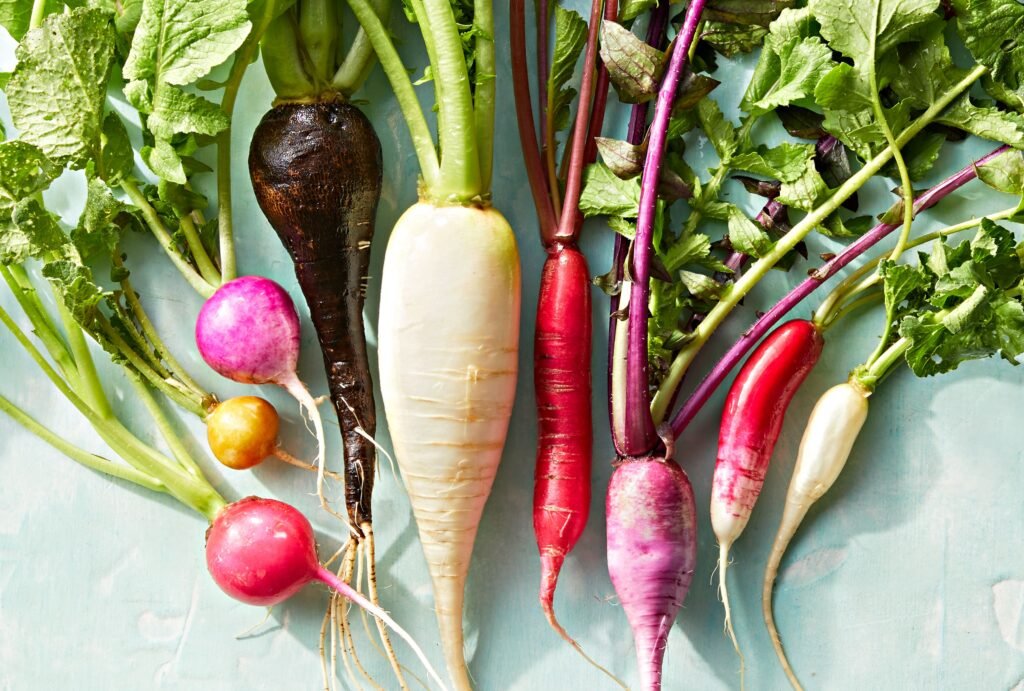
Radishes are compact, fast-growing, and ideal for container gardening. Their small size and minimal root depth make them perfect for urban settings.
Why Radishes Excel in Containers
- Rapid Growth: Radishes can be ready to harvest in as little as 20–30 days.
- Shallow Roots: Only 6 inches of soil depth is needed.
- Variety: Round, elongated, and colorful varieties are easy to grow.
Planting Tips
- Soil: Loose, sandy, and well-draining soil helps roots develop properly.
- Sunlight: Radishes need at least 6 hours of sunlight daily.
- Spacing: Sow seeds 1 inch apart; thin seedlings to avoid overcrowding.
- Watering: Keep soil evenly moist to prevent the roots from becoming tough or woody.
Radishes are perfect for intercropping with other small vegetables, maximizing your container space efficiently.
3. Spinach – Nutrient-Dense Leafy Delight
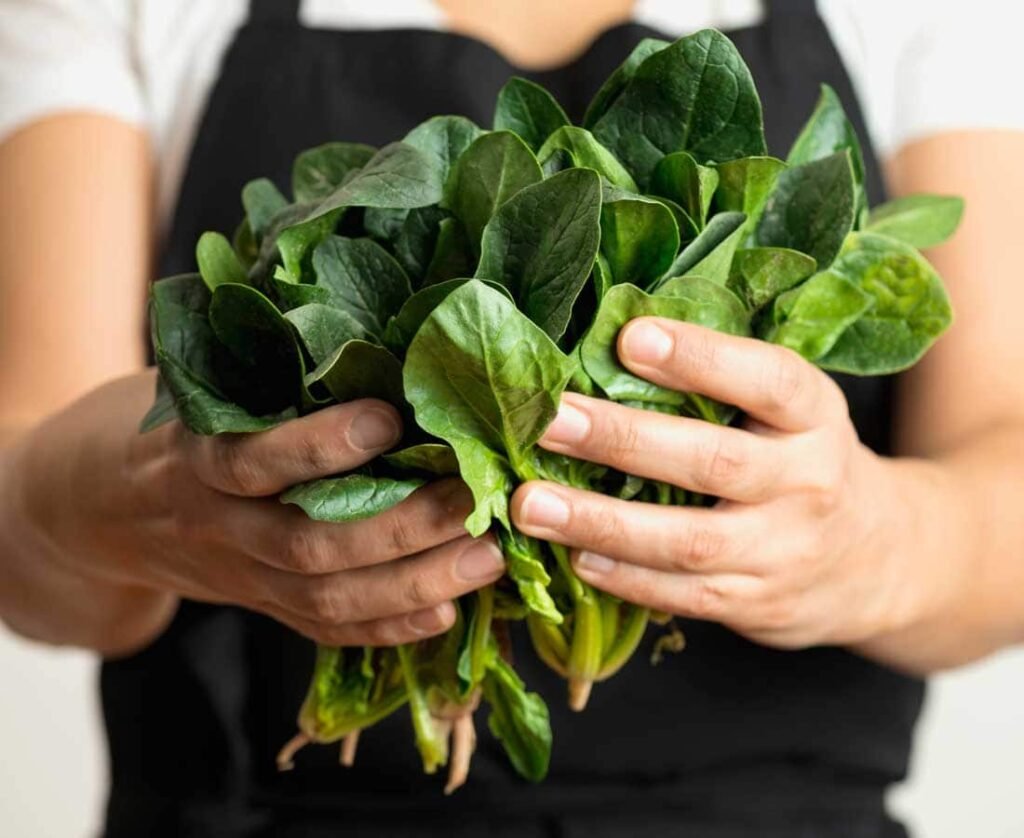
Spinach is a nutrient powerhouse that grows well in small containers. It is especially suitable for cooler seasons, making it ideal for year-round urban gardening.
Benefits of Container Spinach
- Compact Growth: Spinach doesn’t require deep containers—6–8 inches is enough.
- Continuous Harvest: Leaves can be harvested progressively without uprooting the plant.
- Versatile Use: Spinach can be eaten fresh in salads, sautéed, or added to smoothies.
Planting Tips
- Soil: Rich, well-draining soil with added compost ensures healthy leaves.
- Sunlight: Spinach thrives in partial sunlight but prefers at least 4–5 hours of direct light.
- Watering: Maintain consistently moist soil to prevent wilting.
- Fertilizing: Use a balanced, water-soluble fertilizer every 3–4 weeks to promote lush leaf growth.
Spinach is highly adaptable and pairs well with other quick-growing crops like radishes or lettuce in shared containers.
4. Cherry Tomatoes – The Flavorful Fruit Vegetable
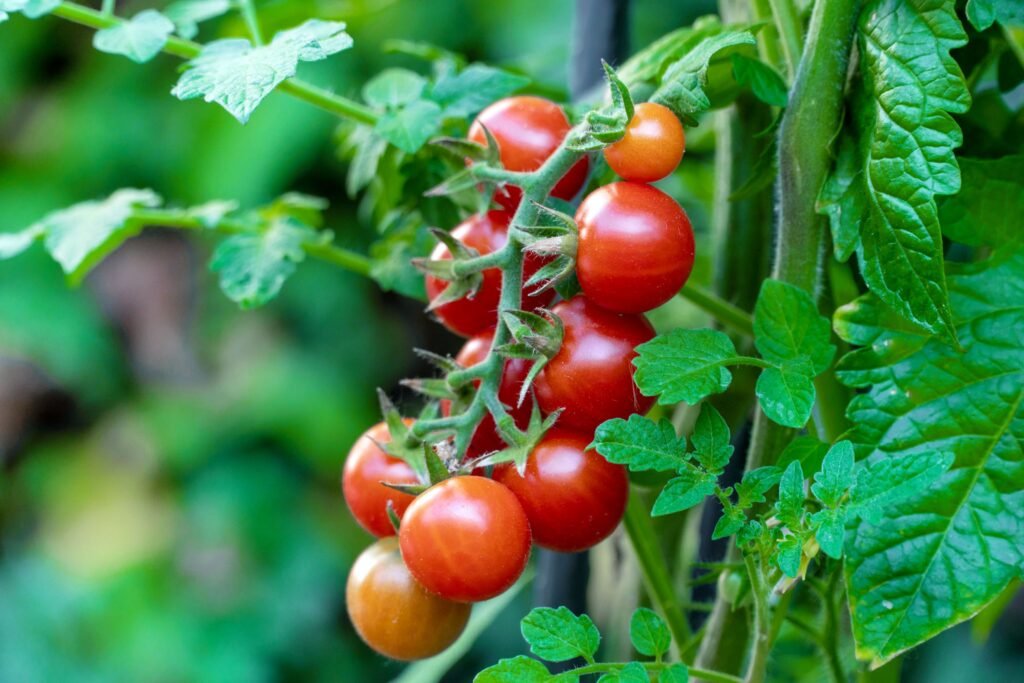
Although technically a fruit, tomatoes are commonly treated as vegetables in culinary contexts. Cherry tomatoes are excellent for container gardening due to their compact growth habit and high yield.
Why Cherry Tomatoes Work Well in Small Spaces
- Compact Varieties: Varieties like ‘Tiny Tim,’ ‘Patio Princess,’ and ‘Bush Early Girl’ are bred for containers.
- High Yield: Even small plants produce numerous fruits.
- Vertical Growth: Can be trained to grow upward using stakes or small cages, saving space.
Planting Tips
- Containers: Use pots at least 12 inches deep to accommodate roots.
- Soil: Well-draining, nutrient-rich potting mix is essential.
- Sunlight: Cherry tomatoes require 6–8 hours of sunlight daily.
- Watering: Keep soil consistently moist; avoid wetting the foliage to prevent fungal diseases.
- Pruning: Remove suckers to encourage strong growth and better fruiting.
Cherry tomatoes offer an urban gardener the joy of picking ripe, juicy tomatoes at home, making salads and sauces fresher and more flavorful.
5. Peppers – Compact Heat and Sweetness
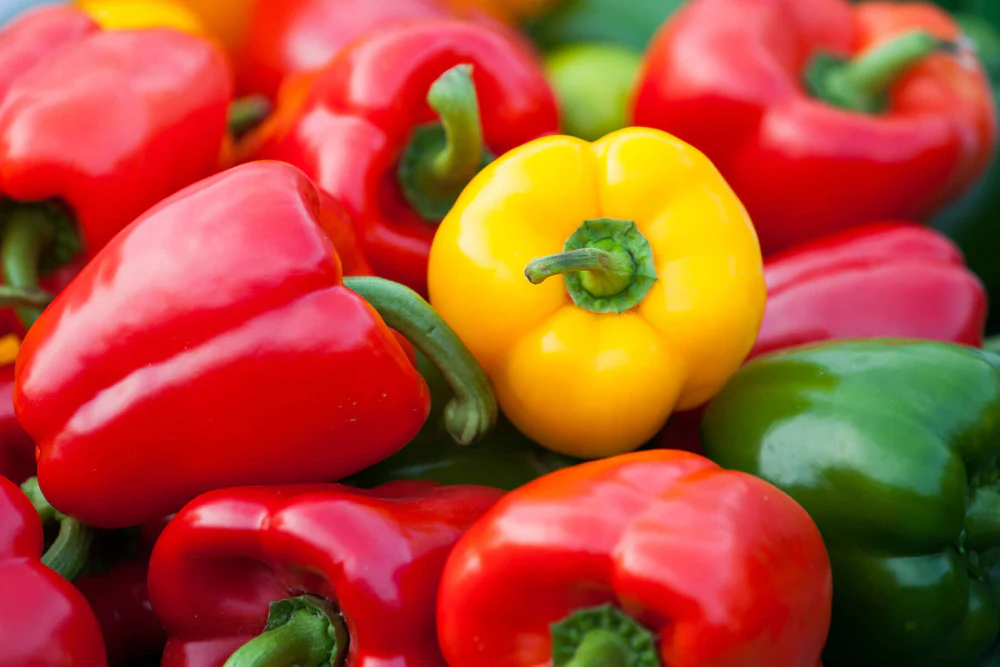
Peppers, including bell peppers and hot varieties, are perfect for container gardening. They grow well in small pots, produce abundant fruit, and add flavor and color to your urban garden.
Advantages of Growing Peppers in Containers
- Compact Size: Many dwarf varieties grow 12–18 inches tall.
- Continuous Production: With proper care, peppers can produce fruit year-round indoors or outdoors.
- Versatile Use: Sweet, spicy, or ornamental, peppers add flavor to countless dishes.
Planting Tips
- Containers: Use 8–12 inch pots for dwarf varieties and 12–18 inch for larger types.
- Soil: Rich, well-draining potting mix with added compost or slow-release fertilizer.
- Sunlight: Provide at least 6 hours of sunlight daily or use LED grow lights.
- Watering: Keep soil moist but avoid waterlogging.
- Pollination: Gently shake flowers or use a small brush to encourage fruit set indoors.
Peppers thrive with consistent care and offer an exciting, colorful addition to small urban gardens.
Tips for Success in Small Container Gardening
- Use Quality Pots: Ensure proper drainage and adequate size for root growth. Lightweight plastic or fabric pots work well on balconies.
- Rotate Crops: Plant new vegetables in succession to maintain continuous harvests.
- Maximize Light: Move containers to catch sunlight or invest in grow lights for indoor gardening.
- Fertilize Regularly: Container-grown vegetables depend on you for nutrients. Use balanced fertilizers or organic compost to boost growth.
- Monitor Pests: Even indoor gardens can attract pests. Regularly inspect plants and use natural remedies if needed.
By combining these strategies, urban gardeners can successfully cultivate a variety of fresh vegetables in even the smallest spaces.
Conclusion
Urban container gardening makes it possible to enjoy fresh, nutritious vegetables no matter the size of your living space. Lettuce, radishes, spinach, cherry tomatoes, and peppers are all excellent choices for small containers, offering quick growth, high yields, and minimal maintenance. With thoughtful planning, proper care, and attention to light, water, and nutrients, these vegetables can thrive, turning your balcony, rooftop, or windowsill into a productive and vibrant urban oasis.
By embracing container gardening, you not only enjoy fresh produce year-round but also contribute to sustainable living, reduce food miles, and create a greener, healthier urban environment. Whether you’re a beginner or an experienced gardener, small-space vegetable gardening is a rewarding way to connect with nature and cultivate delicious, homegrown meals.
